Intelligent lighting and space solutions provider Acuity Brands (NYSE:AYI) met Wall Street’s revenue expectations in Q4 CY2024, with sales up 1.8% year on year to $951.6 million. Its non-GAAP profit of $3.97 per share was 2% above analysts’ consensus estimates.
Is now the time to buy Acuity Brands? Find out in our full research report.
Acuity Brands (AYI) Q4 CY2024 Highlights:
- Revenue: $951.6 million vs analyst estimates of $956.2 million (1.8% year-on-year growth, in line)
- Adjusted EPS: $3.97 vs analyst estimates of $3.89 (2% beat)
- Operating Margin: 14%, in line with the same quarter last year
- Free Cash Flow Margin: 11.9%, down from 18.8% in the same quarter last year
- Organic Revenue rose 1.8% year on year (-6.3% in the same quarter last year)
- Market Capitalization: $9.29 billion
“Our fiscal 2025 first quarter performance was solid,” stated Neil Ashe, Chairman, President and Chief Executive Officer of Acuity Brands,
Company Overview
One of the pioneers of smart lights, Acuity (NYSE:AYI) designs and manufactures light fixtures and building management systems used in various industries.
Electrical Systems
Like many equipment and component manufacturers, electrical systems companies are buoyed by secular trends such as connectivity and industrial automation. More specific pockets of strong demand include Internet of Things (IoT) connectivity and the 5G telecom upgrade cycle, which can benefit companies whose cables and conduits fit those needs. But like the broader industrials sector, these companies are also at the whim of economic cycles. Interest rates, for example, can greatly impact projects that drive demand for these products.
Sales Growth
Reviewing a company’s long-term sales performance reveals insights into its quality. Any business can have short-term success, but a top-tier one grows for years. Unfortunately, Acuity Brands’s 1.5% annualized revenue growth over the last five years was sluggish. This fell short of our benchmarks and is a tough starting point for our analysis.
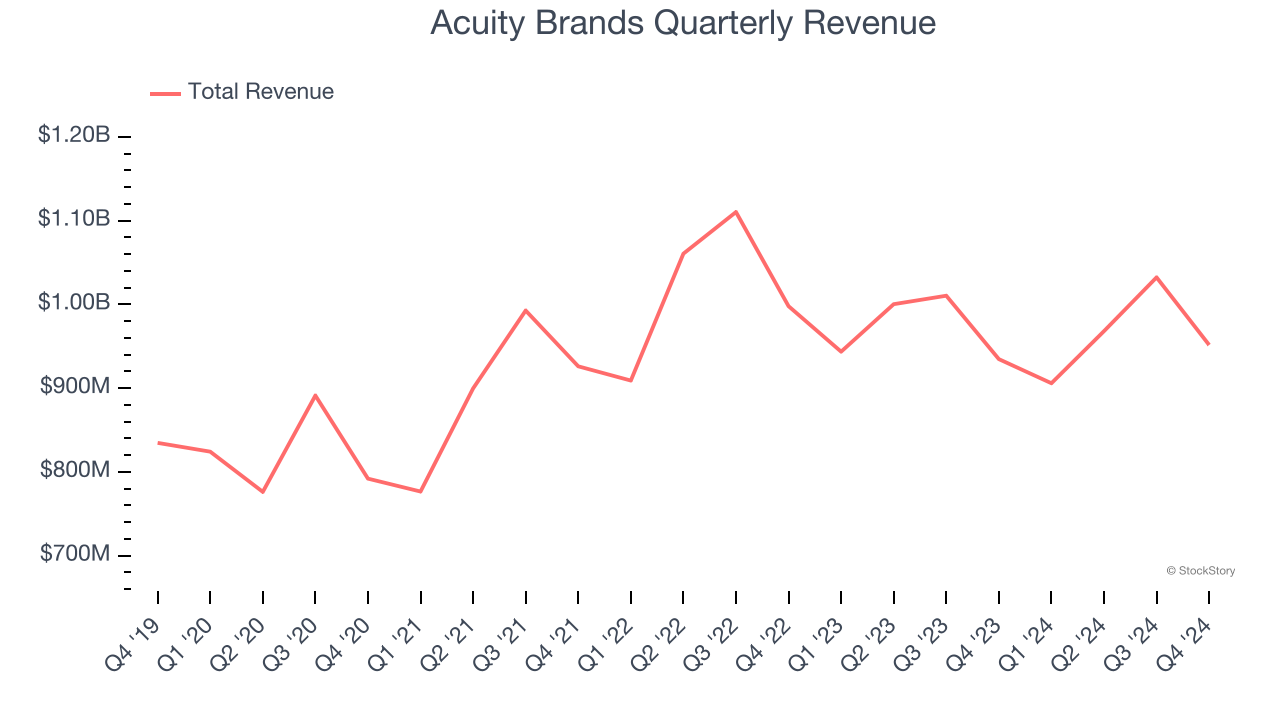
Long-term growth is the most important, but within industrials, a half-decade historical view may miss new industry trends or demand cycles. Acuity Brands’s history shows it grew in the past but relinquished its gains over the last two years, as its revenue fell by 2.7% annually. Acuity Brands isn’t alone in its struggles as the Electrical Systems industry experienced a cyclical downturn, with many similar businesses observing lower sales at this time. 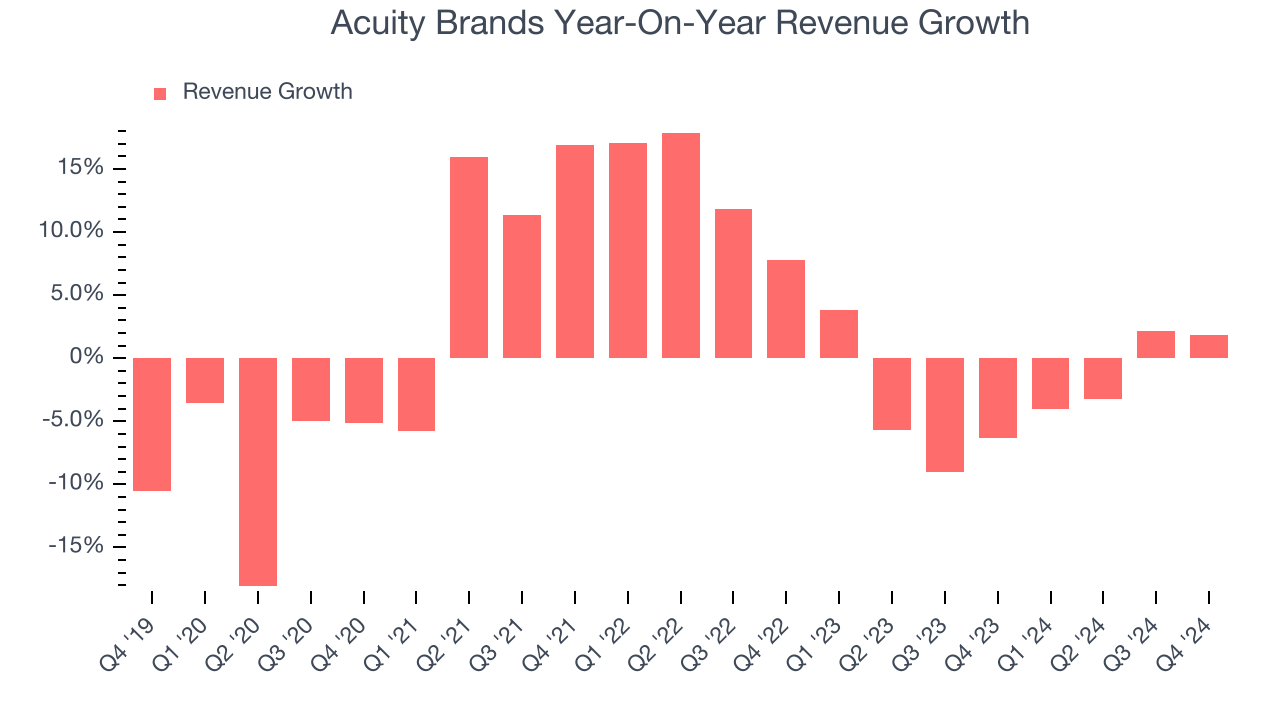
We can better understand the company’s sales dynamics by analyzing its organic revenue, which strips out one-time events like acquisitions and currency fluctuations because they don’t accurately reflect its fundamentals. Over the last two years, Acuity Brands’s organic revenue averaged 2.6% year-on-year declines. Because this number aligns with its normal revenue growth, we can see the company’s core operations (not acquisitions and divestitures) drove most of its results. 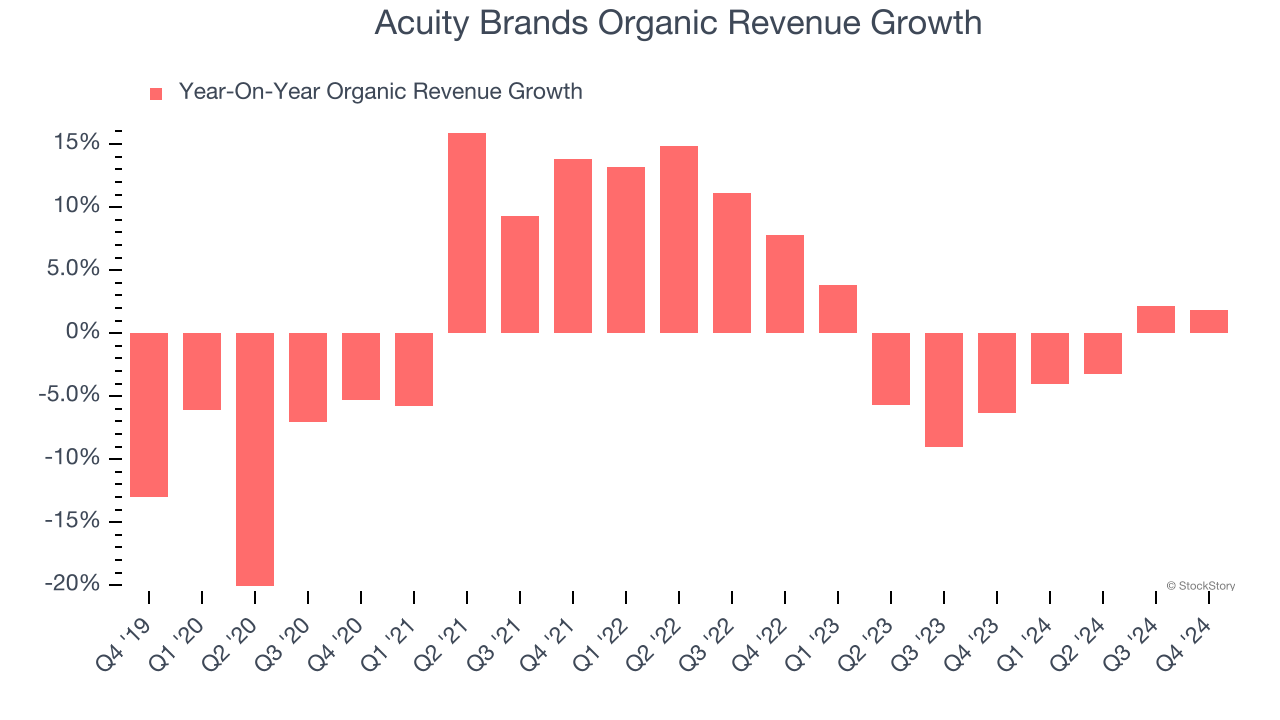
This quarter, Acuity Brands grew its revenue by 1.8% year on year, and its $951.6 million of revenue was in line with Wall Street’s estimates.
Looking ahead, sell-side analysts expect revenue to grow 5.6% over the next 12 months. Although this projection implies its newer products and services will fuel better top-line performance, it is still below the sector average.
Today’s young investors won’t have read the timeless lessons in Gorilla Game: Picking Winners In High Technology because it was written more than 20 years ago when Microsoft and Apple were first establishing their supremacy. But if we apply the same principles, then enterprise software stocks leveraging their own generative AI capabilities may well be the Gorillas of the future. So, in that spirit, we are excited to present our Special Free Report on a profitable, fast-growing enterprise software stock that is already riding the automation wave and looking to catch the generative AI next.
Operating Margin
Operating margin is a key measure of profitability. Think of it as net income - the bottom line - excluding the impact of taxes and interest on debt, which are less connected to business fundamentals.
Acuity Brands has been an optimally-run company over the last five years. It was one of the more profitable businesses in the industrials sector, boasting an average operating margin of 12.7%. This result isn’t surprising as its high gross margin gives it a favorable starting point.
Analyzing the trend in its profitability, Acuity Brands’s operating margin rose by 3.5 percentage points over the last five years, showing its efficiency has improved.
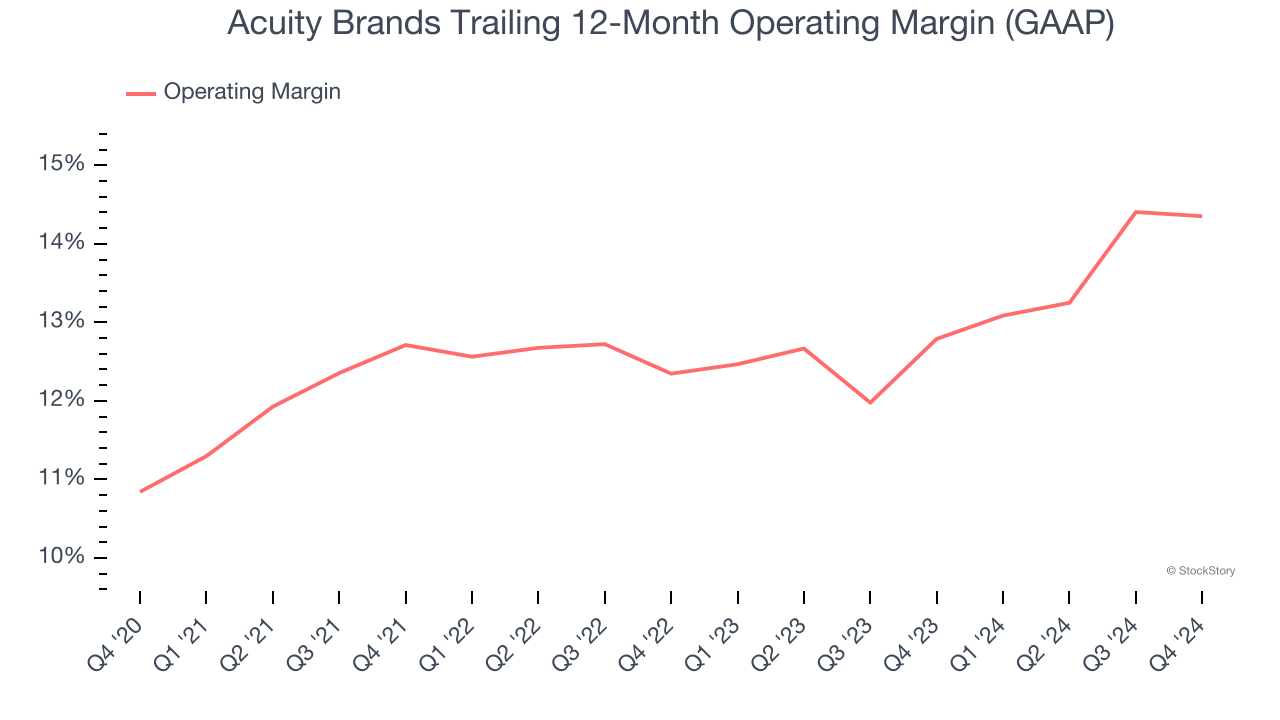
In Q4, Acuity Brands generated an operating profit margin of 14%, in line with the same quarter last year. This indicates the company’s cost structure has recently been stable.
Earnings Per Share
Revenue trends explain a company’s historical growth, but the long-term change in earnings per share (EPS) points to the profitability of that growth – for example, a company could inflate its sales through excessive spending on advertising and promotions.
Acuity Brands’s EPS grew at a solid 11% compounded annual growth rate over the last five years, higher than its 1.5% annualized revenue growth. This tells us the company became more profitable on a per-share basis as it expanded.
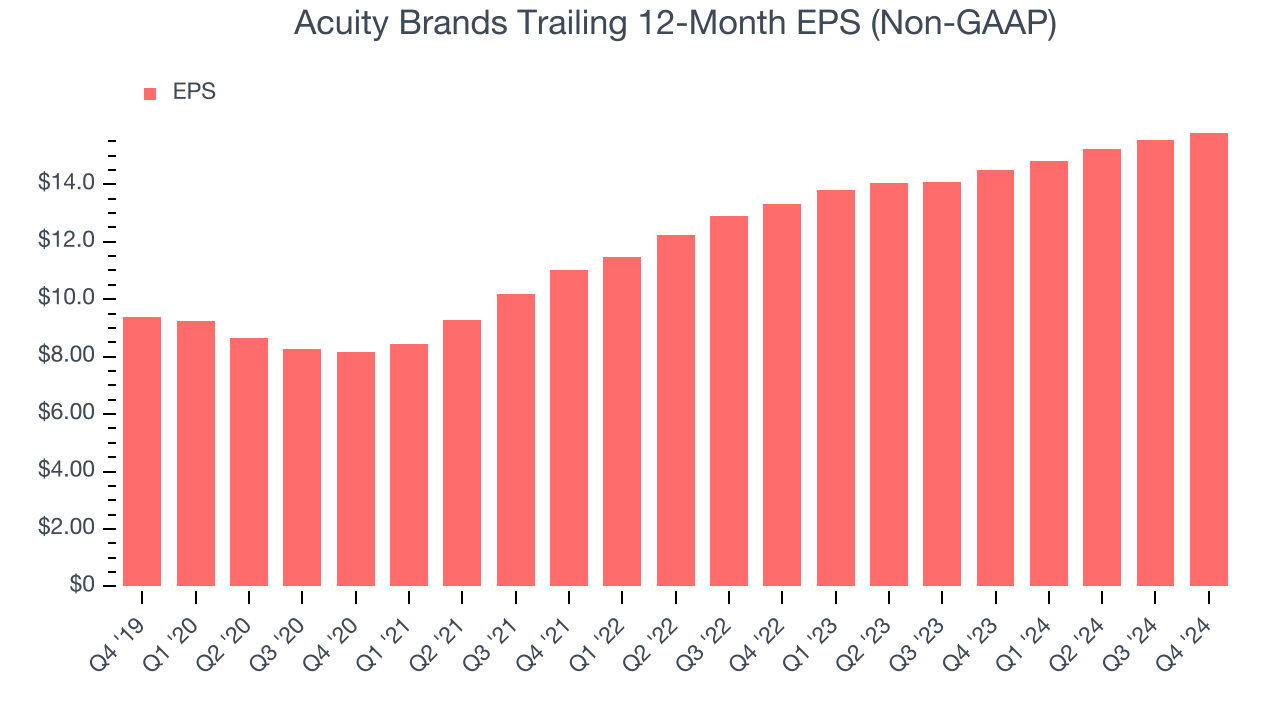
We can take a deeper look into Acuity Brands’s earnings to better understand the drivers of its performance. As we mentioned earlier, Acuity Brands’s operating margin was flat this quarter but expanded by 3.5 percentage points over the last five years. On top of that, its share count shrank by 19.7%. These are positive signs for shareholders because improving profitability and share buybacks turbocharge EPS growth relative to revenue growth. 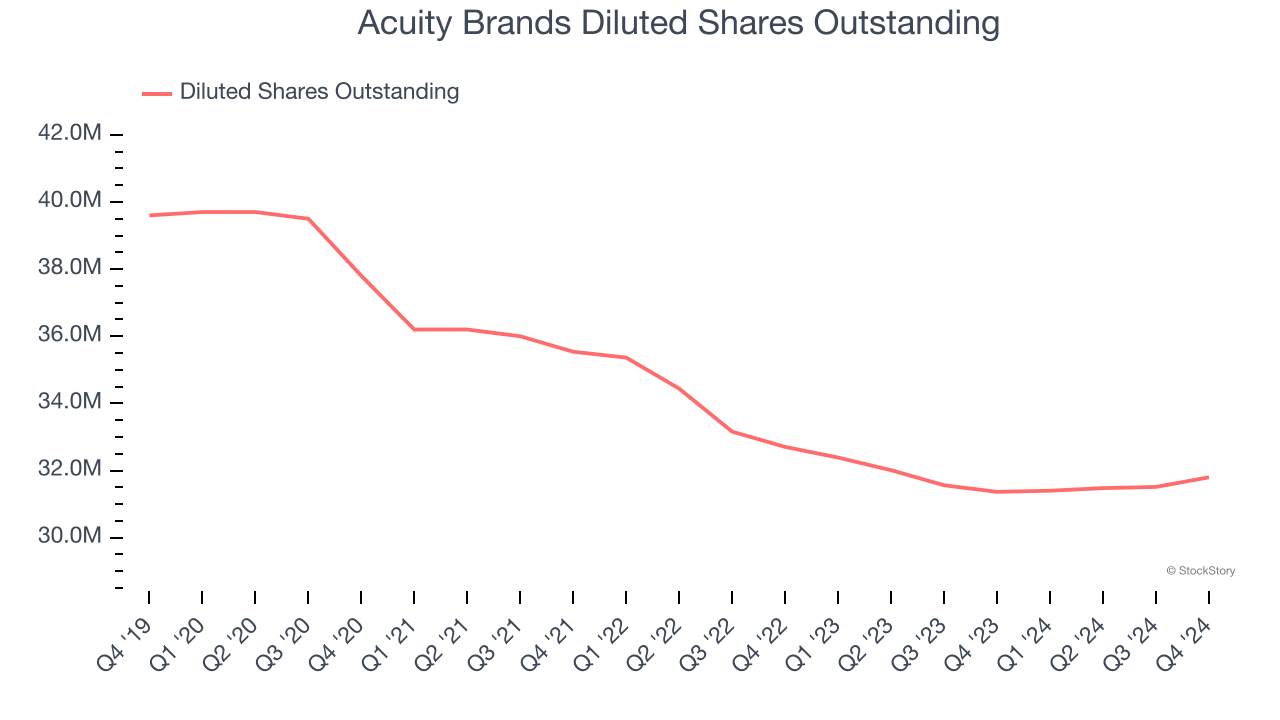
Like with revenue, we analyze EPS over a more recent period because it can provide insight into an emerging theme or development for the business.
For Acuity Brands, its two-year annual EPS growth of 8.9% was lower than its five-year trend. We hope its growth can accelerate in the future.In Q4, Acuity Brands reported EPS at $3.97, up from $3.72 in the same quarter last year. This print beat analysts’ estimates by 2%. Over the next 12 months, Wall Street expects Acuity Brands’s full-year EPS of $15.80 to grow 8.3%.
Key Takeaways from Acuity Brands’s Q4 Results
We struggled to find many resounding positives in these results. Its organic revenue fell slightly short of Wall Street’s estimates and revenue was only in line. There was also no improvement in operating margin from the same period last year. Overall, this quarter could have been better. The stock traded down 2.1% to $297.93 immediately after reporting.
Acuity Brands’s earnings report left more to be desired. Let’s look forward to see if this quarter has created an opportunity to buy the stock. We think that the latest quarter is only one piece of the longer-term business quality puzzle. Quality, when combined with valuation, can help determine if the stock is a buy. We cover that in our actionable full research report which you can read here, it’s free.
